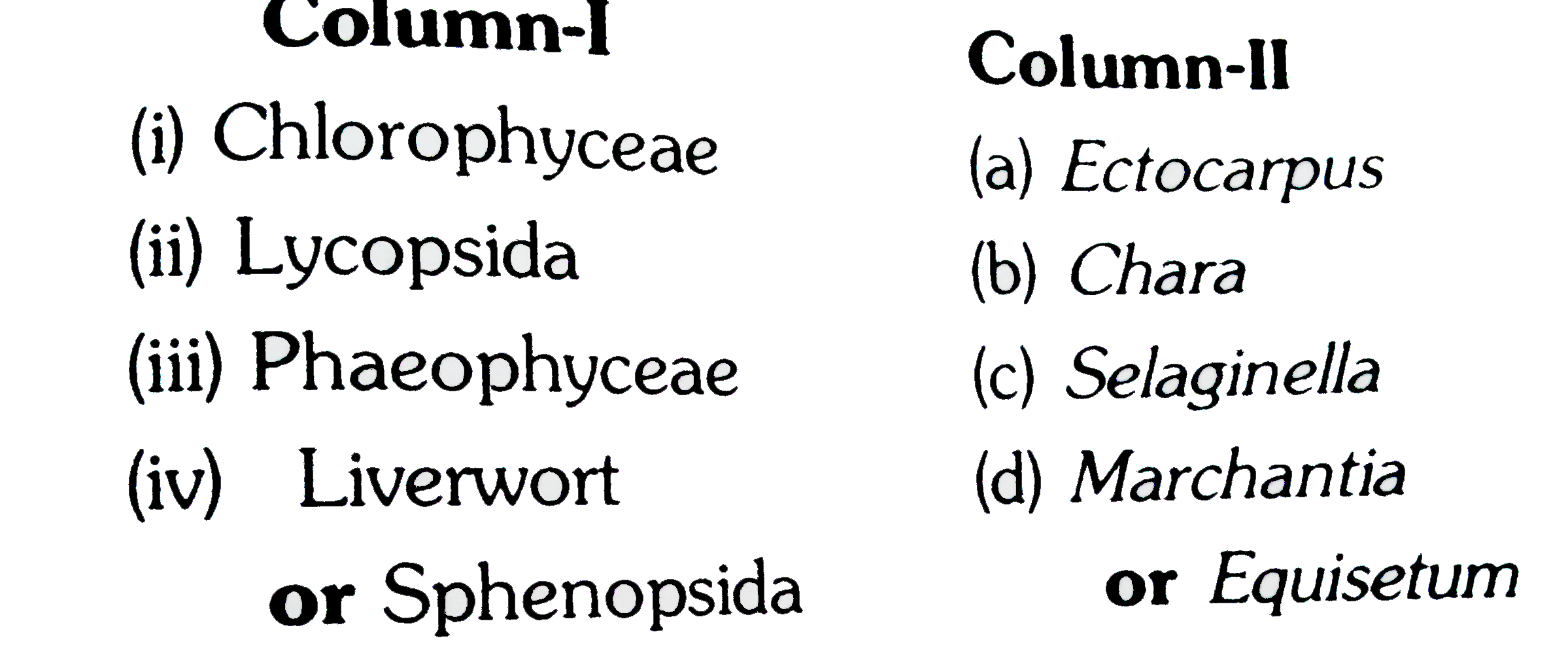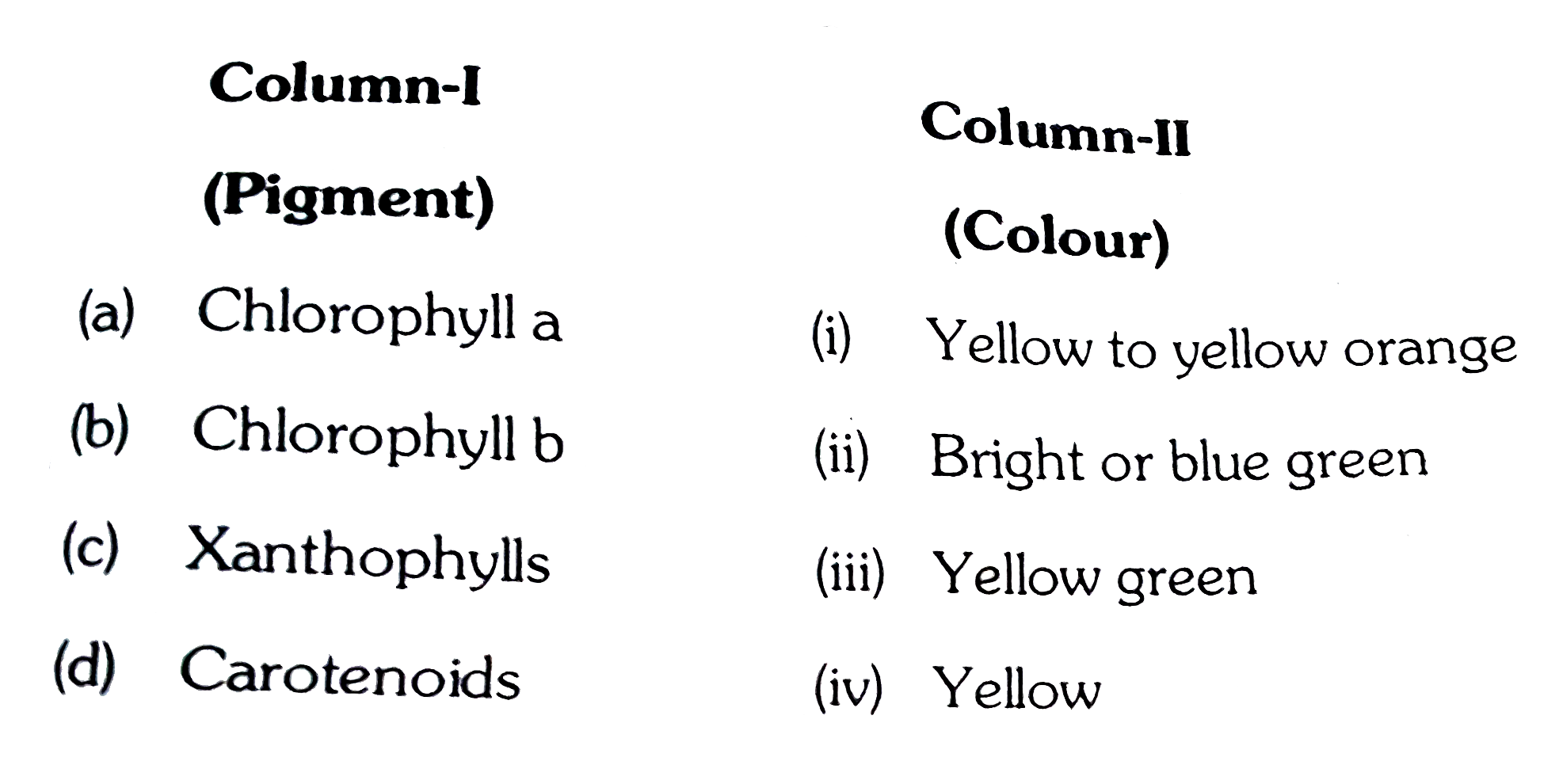Match column I with column II
a (i), b (ii), c (iii), d (iv)
a (ii), b (i), c (iii), d (iv)
a (iii), b (iv), c (ii), d (i)
a (iv), b (i), c (ii), d (iii)
The correct Answer is:D
To solve the matching question between Column I and Column II, we will analyze each item in Column I and find its corresponding match in Column II.
1. Long term adaptation:
- Definition: Long-term adaptations are permanent changes that occur in response to environmental changes and are often inherited.
- Example: Ducks have webbed feet that help them swim efficiently. This adaptation is a result of evolutionary changes over time.
- Match: (a) Long term adaptation → (iv) Duck swimming.
2. Closed system:
- Definition: A closed system is one where energy cannot be transferred to its surroundings. The universe is often considered a closed system because the total amount of energy remains constant, even though its forms may change.
- Match: (b) Closed system → (i) Universe.
3. Homeothermal:
- Definition: Homeothermal animals, also known as warm-blooded animals, maintain a constant body temperature regardless of the environment. Humans (man) are examples of homeothermal organisms.
- Match: (c) Homeothermal → (ii) Man.
4. Dead cells:
- Definition: Dead cells are non-living cells. An example of dead cells is cork, which is made up of mature cork cells that are non-living and have cell walls composed of a waxy substance.
- Match: (d) Dead cells → (iii) Cork.
Final Matches:
- (a) Long term adaptation → (iv) Duck swimming
- (b) Closed system → (i) Universe
- (c) Homeothermal → (ii) Man
- (d) Dead cells → (iii) Cork
Summary of Matches:
- A → 4
- B → 1
- C → 2
- D → 3
- Definition: Long-term adaptations are permanent changes that occur in response to environmental changes and are often inherited.
- Example: Ducks have webbed feet that help them swim efficiently. This adaptation is a result of evolutionary changes over time.
- Match: (a) Long term adaptation → (iv) Duck swimming.
- Definition: A closed system is one where energy cannot be transferred to its surroundings. The universe is often considered a closed system because the total amount of energy remains constant, even though its forms may change.
- Match: (b) Closed system → (i) Universe.
- Definition: Homeothermal animals, also known as warm-blooded animals, maintain a constant body temperature regardless of the environment. Humans (man) are examples of homeothermal organisms.
- Match: (c) Homeothermal → (ii) Man.
- Definition: Dead cells are non-living cells. An example of dead cells is cork, which is made up of mature cork cells that are non-living and have cell walls composed of a waxy substance.
- Match: (d) Dead cells → (iii) Cork.
- (a) Long term adaptation → (iv) Duck swimming
- (b) Closed system → (i) Universe
- (c) Homeothermal → (ii) Man
- (d) Dead cells → (iii) Cork
- A → 4
- B → 1
- C → 2
- D → 3
Topper's Solved these Questions
Similar Questions
Match the column I with column II

View SolutionState: Three merits of tissue culture in Plant propagation.
View SolutionMatch the column I with column II

View SolutionMatch the column I with column II

View SolutionMatch the column I with column II

View SolutionMatch the column I with column II

View SolutionMatch the column I with column II

View SolutionMatch the column I with column II

View SolutionMatch the column I with column II.

View SolutionMatch the column I with column II.

View Solution
